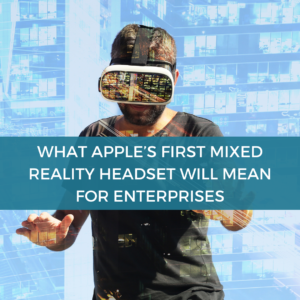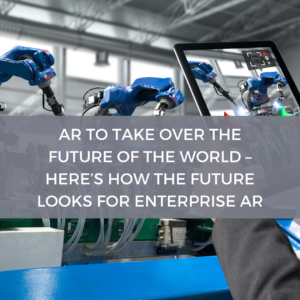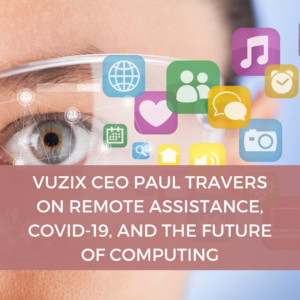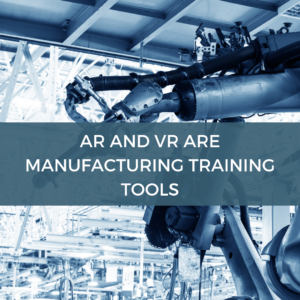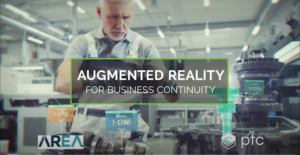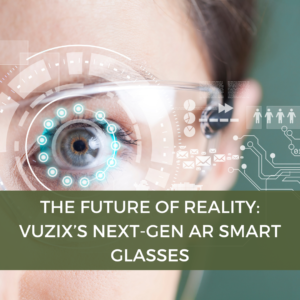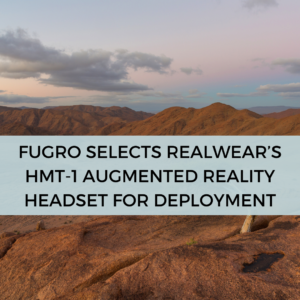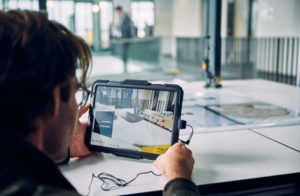With buzz rising over virtual and augmented reality technologies, Van Harken said it was clear that this was a space in which his company belonged.
“It became very apparent the immediate benefits from those programs — the value was immediately realized and spoke volumes,” said Van Harken, co-founder and chief strategy officer for Th3rd Coast Digital Solutions. “It made our decision easy. We’re going to put more of our focus into the enterprise and training side of things.”
Augmented reality is when a user utilizes a device to view real world environments overlaid with computer-generated perceptual information with which the user can interact. Virtual reality provides an immersive experience where a user operates in a simulated environment.
Both technologies, referred to as extended reality (XR), have long been evolving and now are finding a place in manufacturing.
Training game-changer
Some manufacturers are early adopters of these technologies for a variety of applications, from employee training to product development and marketing.
Forging a strategic partnership with Boston-based computer software and services company PTC — and its AR software development kit (SDK) Vuforia — Th3rd Coast is heavily involved in the XR space.
Van Harken said it’s a welcome addition to manufacturing.
“A lot of people in those spaces are really in an analog state — pen to paper, no traceability, no digital threads through anything,” he said. “So, just getting anything digitized in that realm is a huge step forward. But, if you can create more efficiencies with how to train people faster and better, then you create a more agile and nimble workforce that can adapt to various changing conditions in the factory.”
Still, barriers exist in adapting XR technology, as seen in the fact that primarily large manufacturers are the ones adopting it. Education is a key part of the challenge, according to Van Harken.
To address this need for market education, Van Harken and Th3rd Coast established a nonprofit news network on XR technologies. The network, found at th3rdeyexr.com, highlights different ways that enterprise users are applying these technologies.
Training is one primary application for XR, providing an immersive experience even when a user is not necessarily on the shop floor. Through these technologies, manufacturers are able to transcend ineffective user manuals and other analog training materials.
Additionally, it’s difficult to pass down knowledge from employees who were trained with analog materials decades ago.
“When they retire, in the past, that knowledge has retired with them,” Van Harken said. “One thing that XR/AR solutions provide is a method for early-extracting and documenting that knowledge to be able to pass it on. That’s the best way they learn.”
By using XR technology to train workers in the moment, Van Harken said that it can lead to a well-rounded workforce that contains fewer specialists and more generalists. And, for an industry that suffers from a chronic talent gap and workforce shortage, wooing a new generation to the job is vital.
Budget buster?
Price is another barrier that can block small manufacturers from reaping the benefits of XR technology. However, as it evolves, the hardware and technology is slowly becoming more affordable.
For instance, an OculusGo — a virtual reality headset developed by Facebook Technologies — is available for around $200. Walmart Inc. purchased thousands of the devices as it dedicated a large portion of its training to virtual reality.
Hudsonville-based Immy Inc., which recently started doing business as Optique, has an optic display system in the works that is poised to become more accessible to manufacturers of all sizes.
“Our technology and our approach — it’s very different in the fact that it’s very cost effective to manufacture and produce,” said Optique CEO Sam Vilardi. “So, I think the barrier to entry for us isn’t going to be nearly what the competition is so it will allow us to work with smaller manufacturers.”
Outside of training, product design and development is another prime application for XR technology. Vilardi pointed to Steelcase Inc. as an example of a company that utilizes this form of technology to bring together design and development teams from across the country.
“You start to create this experience that allows you to design more effectively and more efficiently because there are a lot of nuances in design,” Vilardi said. “Some people struggle visualizing without being able to see it and touch and feel it. This technology brings it that much closer.”
Optique also looks to improve upon one other factor that can sour manufacturers on using the technology.
“The reason these hardwares have not gained adoption, to be blunt, is they leave a lot to be desired for,” Vilardi said. “The experience sucks. A lot of them create nausea, motion sickness and eye fatigue.”
Marketing tool
Furniture manufacturer Trendway Corp. worked in conjunction with Th3rd Coast to bring augmented reality to its company — but not for training or product design.
The Holland-based company developed an application in 2018 called the Trendway AR Office Builder.
Through a smartphone camera, the app allows the user to digitally place Trendway’s furniture throughout a real world space, giving customers an idea of how it would look.
The app also links the user to product information on Trendway’s website while housing videos where product experts walk through pertinent information associated with the product.
“In our case, we put together idea starters — it could be packages or full office setups,” said Nancy Stryker, Trendway’s director of marketing.
While the app wasn’t borne out of COVID, the pandemic has forced Trendway to start forging ahead with technology it had already been considering, as is the case with many other manufacturers.
“COVID really accelerated that need and desire for these technologies,” Stryker said. “We’re finding that it’s something that will only continue to grow.”
For further information on Barriers to AR adoption in manufacturing watch The AREA Research Committee webinar.
